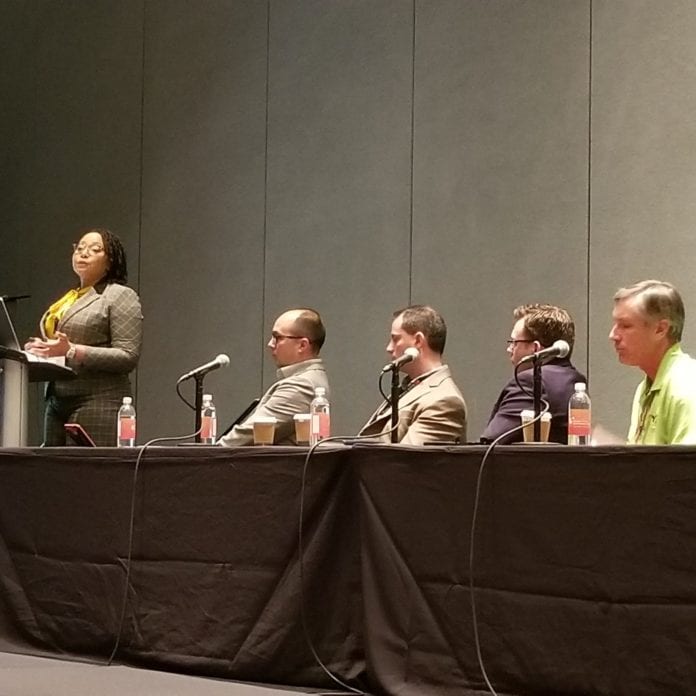ORLANDO, Fla.–5G networks are expected to be significantly more dense than current LTE networks, both due to the shorter propagation range of millimeter-wave frequencies as well as the need for high capacity.
Greater densification represents a number of challenges, according to panelists at last week’s International Wireless Communications Expo, from network synchronization to aesthetics of street-level antennas. Randy Jenkins, director of business development for microwave backhaul provider Aviat Networks, said that physical implementation time can be restricted as well. He said during recent work for the Super Bowl, there were concerns about how long cherry-picker trucks would be in the street to put up network infrastructure, so the number of minutes that installation took and how long trucks could block traffic lanes were limited.
“There are a bunch of limitations that make the wireless connectivity portion of this equation difficult, and we have to solve those — because these 5G networks cannot scale effectively without the wireless backhaul element,” said Jenkins. Watch an excerpt from his presentation below:
Meloni Boatswain, strategic director for state and local government at Intellispring Technologies, shared some real-world experience of the challenges of network densification — she came to the conference directly from some of the final testing of the implementation of a new, ultra-dense Wi-Fi network at Hartsfield-Jackson Atlanta Airport. Intellispring headed up the effort to upgrade the Wi-Fi network at the airport prompted in part by a 2017 report on airport Wi-Fi speeds. While Atlanta’s cellular network speeds fell in the middle of the pack, its Wi-Fi network speed was ranked worst among major U.S. airports.
“Where there is weakness, there’s opportunity and there was a lot of opportunity in Atlanta,” Boatswain said.
Boatswain described some of the hurdles of working at a major urban airport with multiple state, local and federal jurisdictions involved. Work had to be started each night after passengers had left the airport and cleaned up before the earliest morning flights, so that it didn’t impede travelers. Asked what the biggest challenge was, she offered up a succinct answer: customs and border control. Boatswain said that while local and state agencies were motivated to work with her company to advance the network upgrade, the federal agency was a challenge, particularly because of its extremely strict security policies for work in the international areas of the terminal, from the level of background checks that employees doing the work had to pass, to the requirement that every five employees had to have an escort from customs while they were in international terminal areas controlled by the agency. That meant the work in the international terminal took significantly longer than the upgrades to the rest of the airport terminals, Boatswain said. But Intellispring had installed both a previous Wi-Fi network and fiber infrastructure at the airport and was able to draw on that experience for working in the airport environment.
The company used more than 50 wireless technicians to do an active survey of the 6.8 million square foot facility and ultimately installed more than 1,400 Cisco access points along with supporting system upgrades, Boatswain said, while keeping the existing Wi-Fi network active in order to continue providing Wi-Fi access to passengers. While the system is still in final completion, she said that users can now stream 4K video consistently — even in the train tunnel.
Watch an excerpt from Boatswain’s presentation below:

